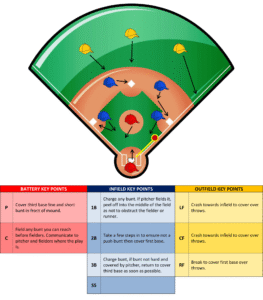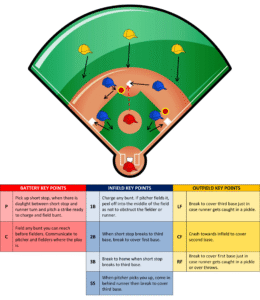Except when there is a runner on third, the offensive is willing to give up an out in order to move a runner along. The overriding defensive strategy is to make sure you get that out. It’s nice to get the lead runner and in certain situations you will try hard to get the lead runner, but if there is any doubt, you must get the out at first.
In all bunting situations, the catcher is in charge. They must take into account along with the speed of the runner and the direction of the bunt where the play must go. They have the play in front of them and can see the whole field. It’s their responsibility to call out where the ball is to be thrown.
The catcher is the coach on the field and must enforce the team strategy to get an out.
The pitcher must focus on multiple tasks during any bunt defense.
- Keep the runner close. There will be no opportunity to get a lead runner in a bunt situation if the runner is not held on base.
- Make a good pitch. Many times, the pitcher is too concerned with getting off the mound quickly instead of making a good pitch. The opposing team is willing to give you an out to advance the runner. Don’t let them advance the runner for free by walking the hitter or making a wild pitch.
- Field your position. Once you have made a quality pitch, you must become a fielder. Remember your responsibility and don’t be a spectator.
Where it is required to give a signal for bunt defense, third base will give the signals. They must get the attention of the field, give the signal whilst facing on an angle where everyone including the catcher and outfielders can see and then tell the pitcher discreetly what the play is.



